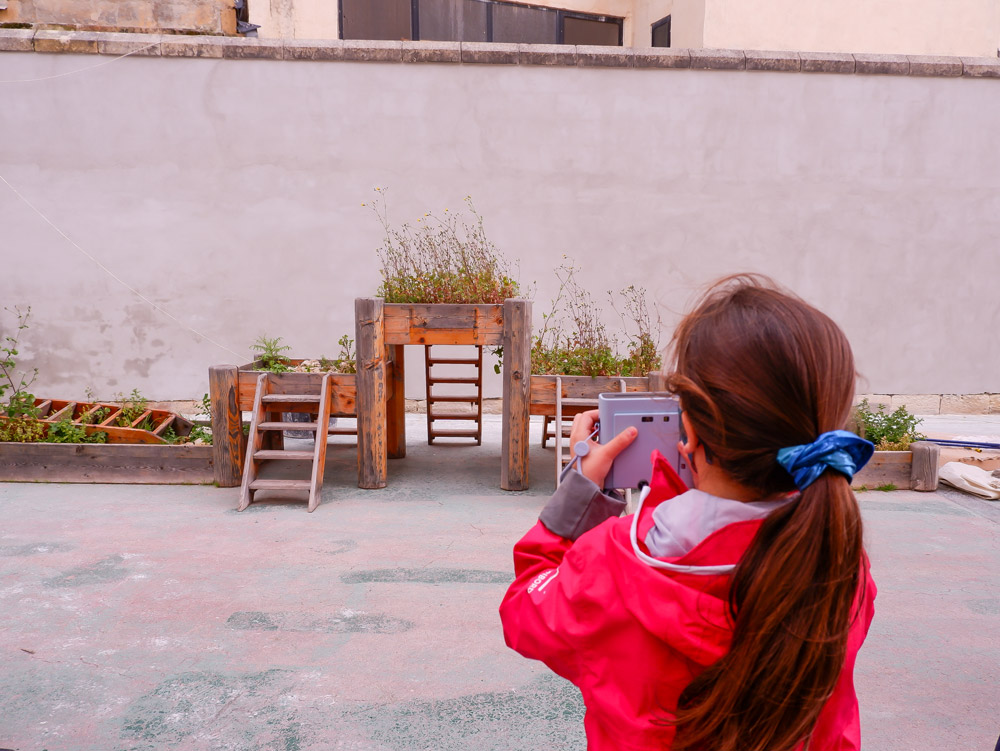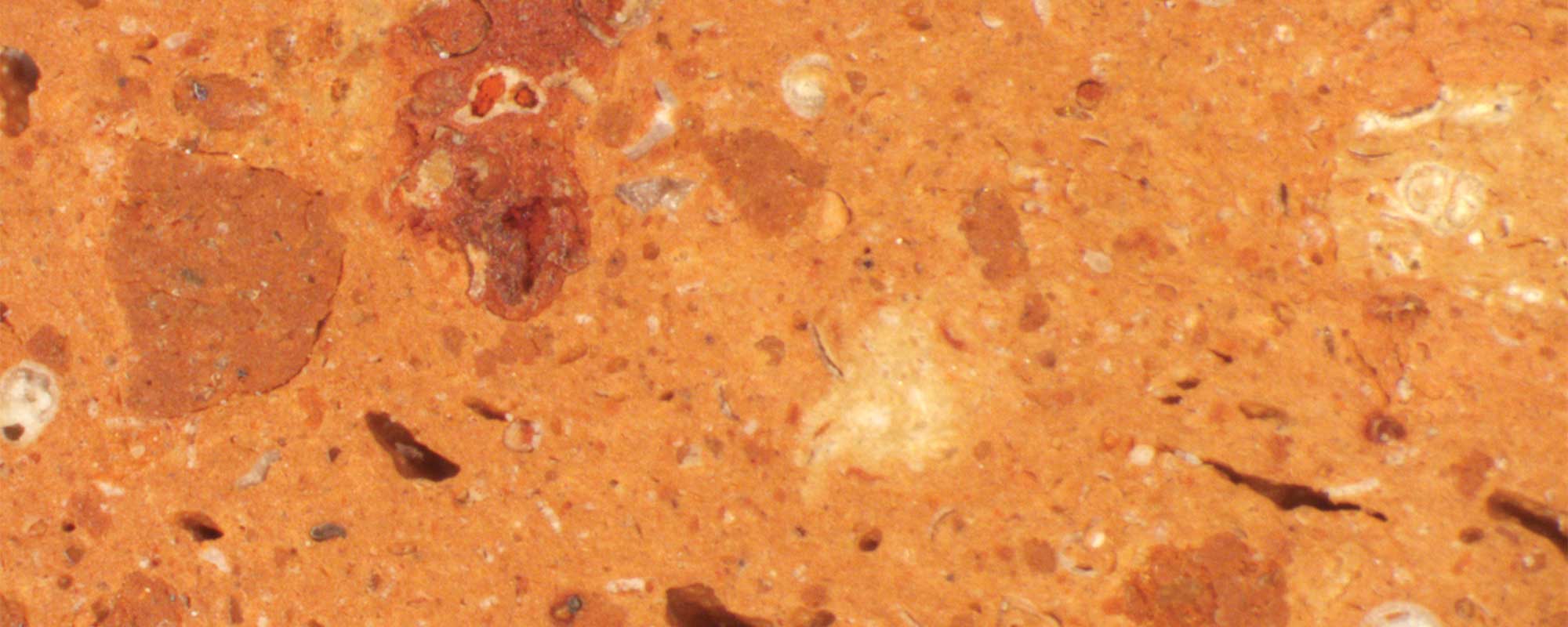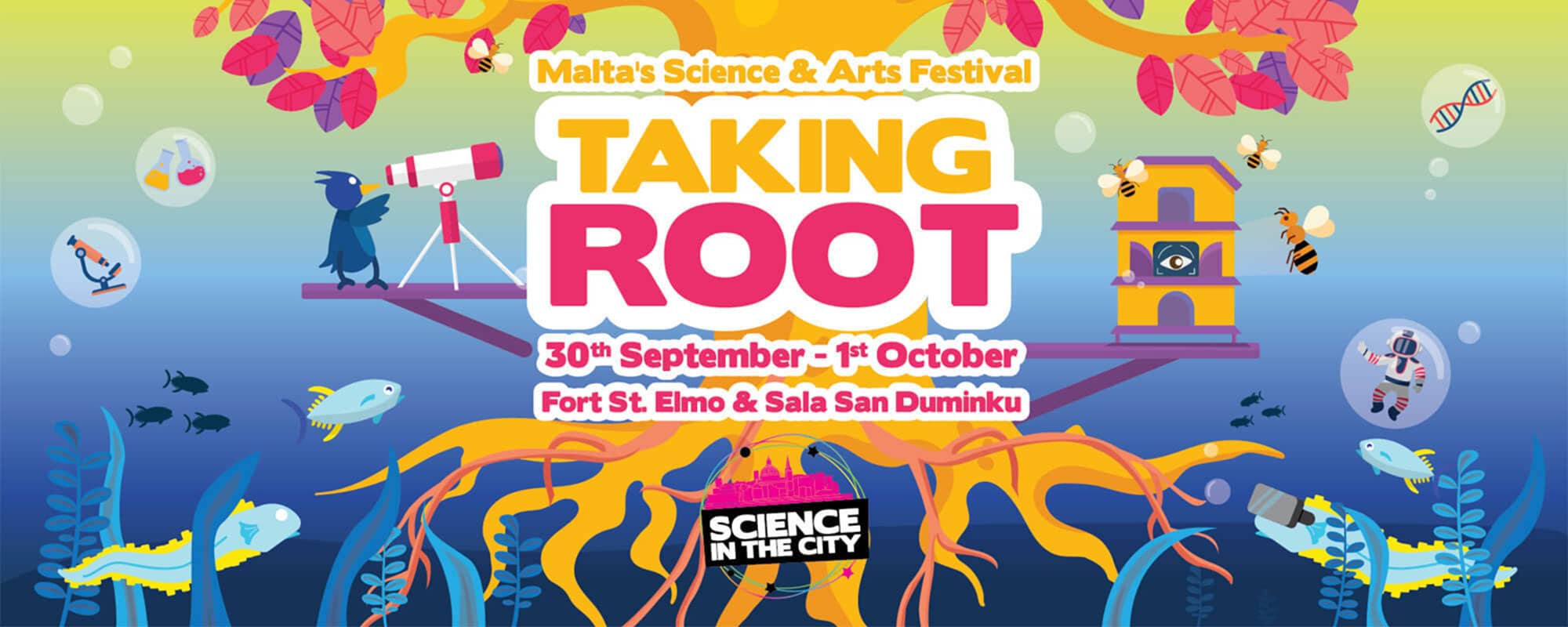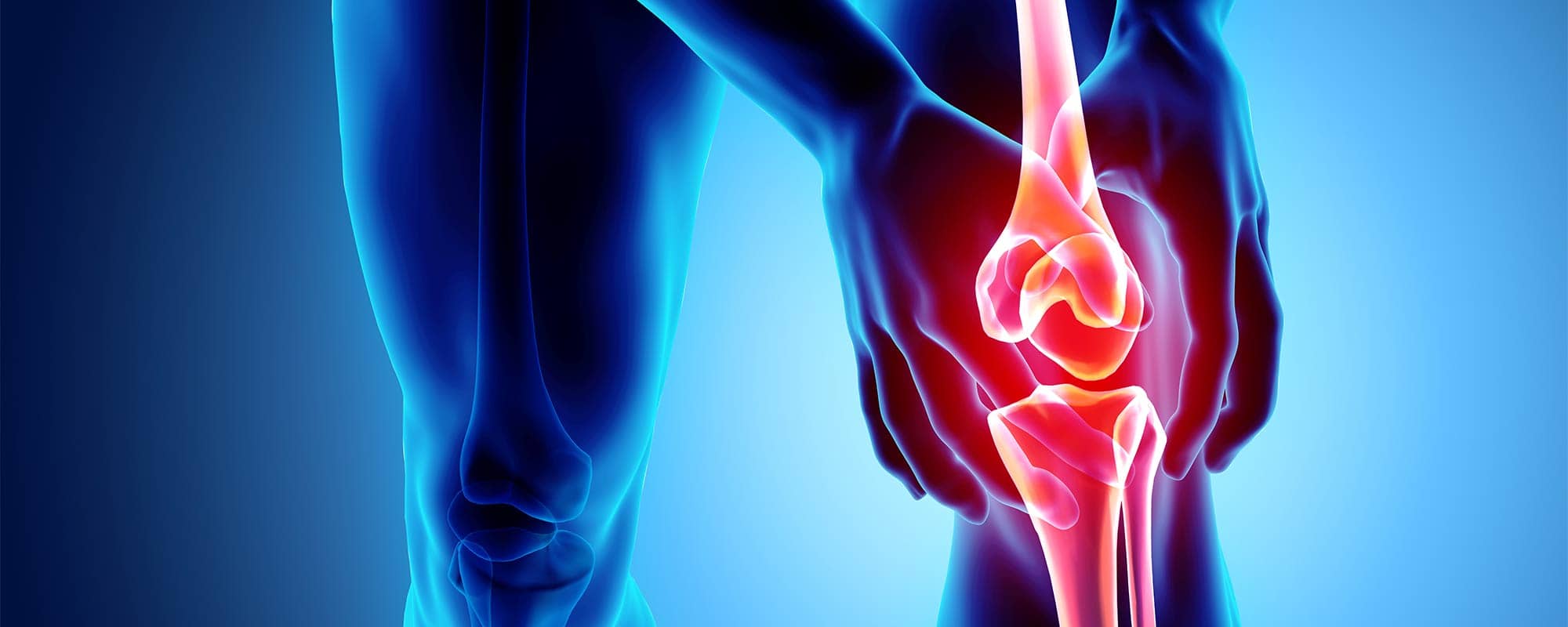In Malta, around 10% of the local population is affected by diabetes. This is especially alarming considering that diabetes can affect the blood and nervous system and eventually even lead to foot amputations. Researchers from the University of Malta (UM) and Mater Dei Hospital are trying to address this problem in their project Sit_Diab: Smart Insole Technology for the Diabetic Foot. They developed a novel method of detecting foot complications early enough to take action in time to help save limbs.
Continue readingWhy Don’t Ants Take Fall Damage?
Do you ever recall those moments in nature, where tiny insects seem to mistake you for a tree? Not only do they walk vertically upwards with incredible grip, but as they are brushed off and fall to the ground, they just nonchalantly walk away. No big deal. Except, when put into perspective, an ant falling from your arm is as though a person fell off a rooftop and walked away untouched. Why do small insects, and ants specifically, never seem to take any fall damage?
Continue readingTackling Tumours: How to Tame the Rebels
To defeat your enemy, you must understand your enemy. We can’t confirm if Sun Tzu would agree with this, but the MPitNET group at the University of Malta (UM) certainly does. THINK dives into their efforts in understanding – and hopefully defeating – pituitary tumours.
Continue readingGzira: How to Make a Leaner, Meaner, Greener City
Over half the global population now lives in cities. As the march of urbanisation trudges on, cities across the globe face mounting pressure to think of urban and green futures for communities in the face of the climate crisis.
But creating a plan for a sustainable future risks missing the green mark if citizens are not given a seat at the table to express their needs and desires, leading to a waste of resources or solutions that no one uses.
An ambitious EU project called VARCITIES is aiming to lead the way with tangible, nature-based solutions that put citizens at the forefront of greener future cities. At present, seven pilot cities (including one seaside locality in Malta, Gzira) are testing and implementing a series of these community-based actions for better creativity, inclusivity, health, and happiness for their citizens.
THINK caught up with two of the team members, Kurt Calleja and Emma Clarke, to talk about the project.
How it All Began
According to Calleja and Clarke, the key first step was to identify characteristics of the pilot sites, which in Malta was Gzira. Then, it became important to talk to various stakeholders: experts, the local council, and most importantly, the locals in order to map out the project’s blueprints.
‘Through this, we identified multiple benefits and how various groups stand to gain from the project. We then considered unforeseen outcomes for the project to try to be as realistic as possible,’ Calleja says.
‘I say realistic because there are several misconceptions about environmental sustainability,’ he adds. ‘There is more to it than simply planting a few trees. The problem is far more complex and requires proper, long-term planning.’
In fact, a workshop held in June 2022 with local residents found that persistent frustrations included a severe lack of green open spaces, limited walkability because of narrow pavements, poor air and noise quality, and a need for more pedestrian routes.
How to Make a Greener, Meaner City
VARCITIES is trying to do a lot. Firstly, it wants to implement micro-greening interventions on a main artery of Gzira, Triq D’Argens, which currently does not have any sort of greenery and is rife with noise and exhaust pollution. This will be implemented through a participatory design process which includes residents, educators, creatives, and experts.
The project also focuses on urban diversity, education, and engagement through innovative pop-up parks and events. It wants to develop a co-created community garden project. The garden, Calleja explains, will be implemented in a collaborative way with artists such as Laura Besancon, an artist in playful interactions who has worked with the children of Gzira Primary School to design the playground.
‘The idea is not to just build a garden and leave it at that. We want to know what residents actually want, not just plant a few trees and build concrete structures,’ he continues.
In other words, they want to make sure it’s going to be used. Currently, the team has observed that playgrounds are not being used by people or children because they were not designed with the users in mind.
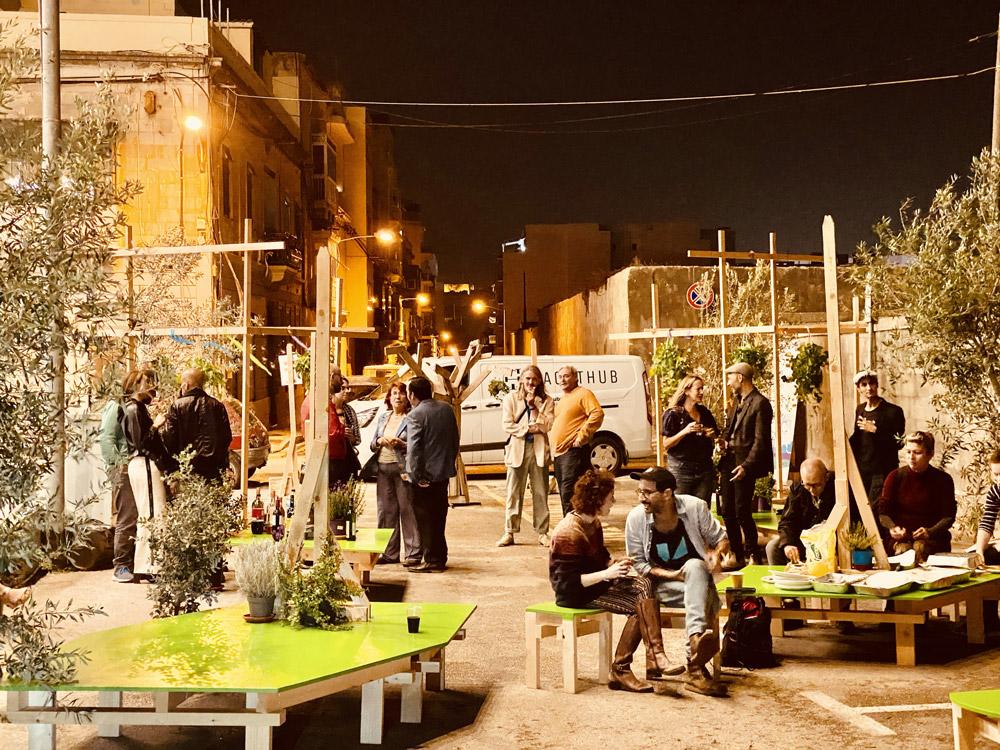
The ‘Human-Centred’ Approach to Design
For the playscape, the VARCITIES team organised workshops with school students, both to educate and as a form of data collection. The playscape is ‘human-centred’ but is also designed according to a need for better biodiversity in order to improve the ecosystem and attract more insects through greening.
In the first workshop with the school children, the team took an ethnographic approach through two parts: visual and experimental.
‘We invited children to go around school to capture photos of places that mean something to them. Then we moved to a more auditory-based practice: we asked the children to document the sound environment of their school, to really actively listen rather than just hear,’ Calleja says.
The soundscapes made by the children were unsurprising; they were sounds of constant traffic, construction, and some bird sounds.
‘Something that stuck out was that even though noise is a part of their everyday culture, it was still something very bothersome and disruptive for them,’ Clarke says.
‘Without any accessible greenery around, they feel disconnected from nature and gravitate more towards their phones,’ she adds.
In the following workshop, the children were asked to unleash their creativity. A blank canvas was laid out, and they were asked to design their ideal playground, a chance to brainstorm and think together on what a future part of their school could be. Now, their artworks are being used as inspiration for the final design of the playscape.
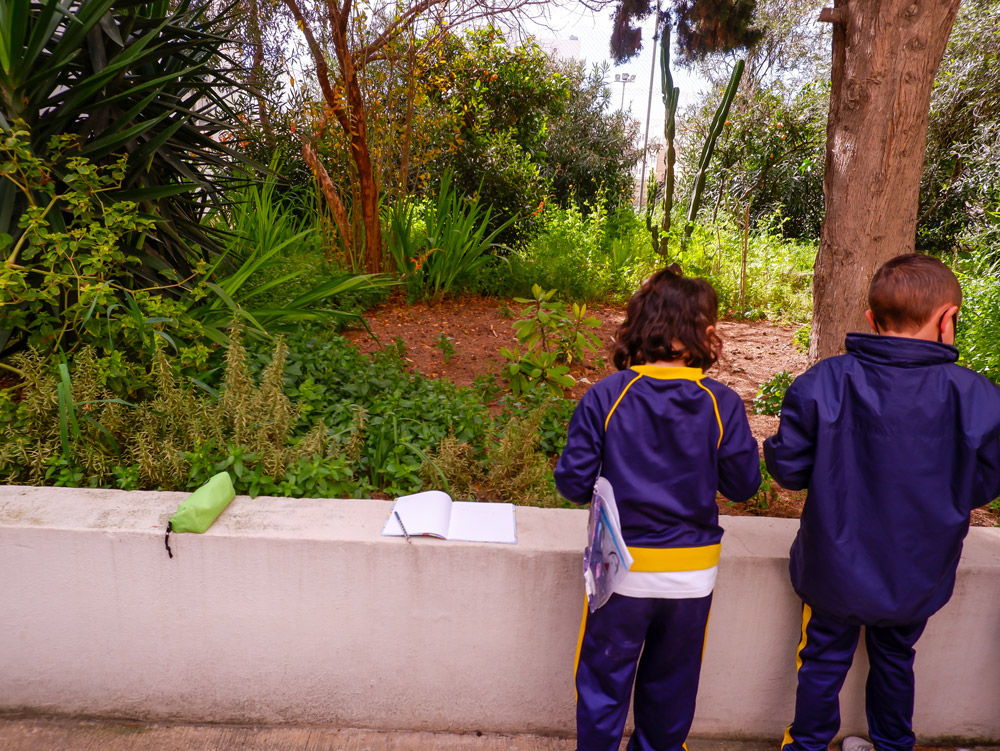
In one last intervention, the team held a planting and propagation workshop, and the plants they nurtured will be used in the actual garden. It’s a wholly collaborative and educative process. In addition to designing the playscape/community garden, the VARCITIES team have hosted a series of pop-up parks around Triq D’Argens throughout November. These parks provided space for social interactions as well as art and science installations, all done in collaboration with local business, citizens, artists and NGOs.
A Blueprint for Going Green Globally
Ultimately, the goal is to build more inclusive and greener cities, and city-based projects like this will let stakeholders evaluate how efficient and effective nature-based solutions are. Initiatives like VARCITIES that use bottom-up, citizen-oriented approaches could become models to build our future cities now.
‘We believe in using the bottom-up, citizen-oriented approach for sustainable solutions for cities. The idea is to eventually be able to see what works and what doesn’t, learn, and upscale the approach, to champion sustainable solutions and improve our lives,’ Calleja said.
Cities that cater for our needs and desires as citizens as well as change the course of climate disaster should not be a utopian fantasy. The interventions done in Gzira could be the green blueprints for everyone’s future.
VARCITIES is an H2020 funded EU project (grant agreement: grant agreement No 869505) led in Malta by Dr Ing. Daniel Micallef (Faculty for the Built Environment) who is supported by academics in the Faculty of Education, Faculty of Science, and Faculty of Engineering including: Dr Edward Duca, Antoine Gatt, Carlos Canas, Dr David Paul Suda, Prof. Emmanuel Singara, Dr Kenneth Scerri, Dr Sarah Scheiber, Dr Simon Borg, Prof. Vincent Buhagiar, and Dr Mark Caruana.
This project is supported by Arts Council Malta.
Forensic Interdisciplinarities with HUMS
On 21 October 2022, HUMS presented their first event of the new academic year! Four speakers explored ‘forensics’ in a variety of scenarios, from police work and literature to archaeology and medicine. Just in case you missed it, we’ve prepared an article to bring you up to scratch!
Continue readingThe Precision Bacteria Hunters Used to Develop New Treatments
COVID-19 vaccines are very good at equipping our bodies with immune defences required to fight the virus should we get infected. However, immunocompromised people may not be protected even if they have received all doses of a vaccine. An international project aims to engineer antibodies that tackle the virus. Bacteriophages can be an important tool to develop these.
Continue readingLiving Smarter: Project MARVEL and Smart Cities
Have you ever wondered what the cities of the future could look like? Do you imagine a dystopian, Orwellian hellscape of mass surveillance, or a hyper-efficient, super-city? An international research project is laying the foundation for Smart Cities (the latter kind!).
Continue readingFiring Up the Past – Unearthing Experimental Archaeology
A university-led project is fabricating Ancient Roman pottery using local raw materials to understand more about Malta’s past
Continue readingBringing Science to the City
Malta’s science and arts festival, Science in the City, is Taking Root once more and proudly presents its 10th festival! Our theme for this year? Taking Root – a means of empowering citizens to use research to uncover socio-political, environmental, and technical hurdles and opportunities while contributing to decisions which impact society.
Science in the City is coming to life in Malta’s capital city of Valletta between Friday 30 September and 1 October, when you can enjoy the sprawling festival within the historical walls of Fort St Elmo, Sala San Duminku, and Spazju Kreattiv. 1 October will bring with it a full day of fun and educational activities for all, taking place in Sala San Duminku and Spazju Kreattiv from 10am to midnight, coinciding with the well sought-after Notte Bianca.
Fort St Elmo – The Astronomical Society of Malta
The Astronomical Society of Malta, a voluntary organisation, will be present at Fort St Elmo, telescope at the ready, for anyone who wishes to be transported into a world of cosmic venture! Discover more about the universe and fall in love with the nocturnal sky to better help preserve it. Visitors will have the opportunity to gaze into the night sky from the fortified enclosure of Fort St Elmo while being shrouded in darkness in an effort to minimise light pollution.
Sala San Duminku – Ensonglopedia
Join the fun at the sing-along at Sala San Duminku on 30 September from 5pm to 11pm and 1 October from 10am to 5:30pm, when John Hinton, comedy-science-singer-songwriter and the creator of Ensonglopedia of Science, will deliver a fusion of science and comedy, rhythmically combined with music. The goal is to educate people about our planet and save it from climate catastrophe. For all those ambitious vloggers, there will also be a workshop in scientific songwriting for you to create your very own unchained melody!
Fort St Elmo – European Forensic Institute
Do you seek to transport yourself to the world of Criminal Minds or Bones? Then this is perfect for you! The European Forensic Institute goes back to 2011, when experts in the fields of criminology, investigation, insurance, and security decided to unite to establish a professional hub in the field of forensic investigations. Walk in the shoes of Dr Spencer Reid and Dr Temperance ‘Bones’ Brennan and try your hand at investigating the latest in forensic tech with the experts. The event will be held at Fort St Elmo from 6pm to 11pm with the aim of bringing to light and clarifying the concepts of forensic science.
St Dominic’s Theatre – Esplora
The Interactive Science Centre, known as Esplora, was founded in 2016 with the aim of delivering an interactive experience of science through over 200 hands-on exhibits in a fun, exciting, and enjoyable way. The design of the displays enables visitors to see the importance and presence of science in everyday life. This experience also involves access to the Planetarium, an immersive experience into the other-worldly realm of the solar system. Esplora’s performance, ’What’s so special about water?’, explores the unusual things water can do in an interactive science show!
Stay tuned for more on Science in the City, Malta!
Register your interest below:
- Street festival Eventbrite registration link https://scienceinthecity.org.mt/street-festival/
- Performance festival Eventbrite registration link https://scienceinthecity.org.mt/performance-festival-events/
Visit the capital on Friday 30 September and Saturday 1 October. Come and celebrate the 10th anniversary of Science in the City with us at Science in the City 2022 – Taking Root! We hope to see you there!
Check out our festival programme here.
From Paper to Prototype: MaltaKnee
How do you simplify one of the most common surgical procedures, knee replacement surgery, and get patients back on their feet faster and with less pain? A collaboration between the University of Malta Faculties of Engineering and Medicine, alongside their industrial partner EMPAV Engineering Ltd, is attempting a solution.
Continue reading


